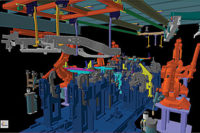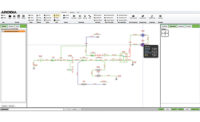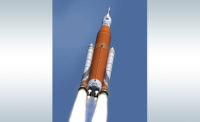Every summer since 1998, teams of college students from around the world have come to the United Kingdom to participate in the international Formula Student (FS) racing competition. Each team designs, builds, tests and races a small-scale formula-style car at the multiday event, which is run by the Institution of Mechanical Engineers.
FS winners are chosen in four categories. This past summer, Delft University of Technology in the Netherlands won both the Class 1 and dynamic events portions. The University of Stuttgart in Germany was the static events winner, and Eindhoven University of Technology in the Netherlands won Class 2.
Other FS races are held at several locations throughout Europe, including Italy, Germany, Austria and Hungary. In 2010, students from Amberg-Weiden University in Germany formed the Running Snail team and won the FS event in Hungary.
Student interest has remained high ever since. Last year, for example, nearly 80 students signed up to form a team and develop the school’s first electric-powered car for the Formula Student Electric (FSE) competition.
“[The FSE] fits in very well with us, because our electrical engineering faculty and IT place great emphasis on renewable energies,” notes Konrad Bittner, project manager for the Running Snail team. “We want to show that an electric [vehicle] doesn’t represent a sacrifice. Rather, it is fun and fits in with motorsport.”
Thomas Simson, the team’s harness module manager, says the biggest challenge was building the car in just a few months (one semester). To meet such a short time frame, the team designed the car’s wire harnesses using Harness proD software made by EPLAN Software & Services LLC.
“The software’s simple operation allowed us to build a complete harness from nothing in one month,” explains Simson. “The cable lengths were exactly the right length, with no need to add an extra bit for safety.”
The car’s electrical equipment includes a battery, an inverter and a microprocessor that controls the battery to optimize driving power. Simson says the electrical system features nearly 400 single wires totaling 212 meters in length. The driver monitors vehicle status by checking gauges on the dashboard.
Harness design with Harness proD begins by defining each connector according to its geometry, pin assignment, and wire name and color. The software immediately recognizes which pins are inserted in which connectors.
Next, the software determines the proper bend radius of each harness based on the number and width of wires it contains. A designer increases or decreases the bend radius by clicking a mouse.
Finally, the software automatically creates a nail board drawing, which is a 2D flattened view of the harness. Students place individual wires onto the board to quickly and easily complete the harness.
“We were able to fit the wire harness into the vehicle straight away,” concludes Simson. “We didn’t forget a single cable when doing so.”
For more information on wire harness design software, call 888-375-2668 or visit www.eplanusa.com.





